BELT CHIRP OR SQUEAL DIAGNOSIS PROCEDURE

BELT CHIRP OR SQUEAL
1987-88 BONNEVILLE WITH 3.8L SFI OR 3800 ENGINE (VIN CODES 3 AND C); 1986-87 GRAND AM WITH 3.0L MFI ENGINE (VIN CODE L)
"This bulletin 86-6(Gasoline)-41 dated May, 1986, due to a change in models effected. Please discard 86-6(Gasoline)-41 and replace it with this revision which provides additional application coverage."
Some 1986 through 1988 vehicles equipped with a single belt accessory drive (SBAD) system, may experience a belt chirp or squeal that cannot be corrected by normal service procedures. It has been determined that the root cause of this condition is pulley misalignment. The following procedure may be used to correct alignment as necessary.
The two most likely pulleys requiring alignment are the A/C compressor or crankshaft pulley. To determine which component must be shimmed, visually sight belt spans No. 1, 2, and 3 from View "A," (see Figure 1).
By visually aligning the front edge of belt spans No. 1 and No. 2 so that the edges align perfectly, compare them with span No. 3 (see Figure 2). If the belt on the crank pulley is forward of spans No. 1 and No. 2, then the A/C compressor needs to be shimmed forward (see Figure 3). If belt span No. 3 is not forward (belt span No. 3. cannot be seen), then align spans No. 1 and No. 2 along the rear edge and then compare them with belt span No. 3 (see Figure 2). If belt span No. 3 is rearward of the edges of spans No. 1 and No. 2, then the crankshaft pulley must be shimmed forward (see Figure 4.)
If the A/C compressor requires shimming, loosen the three compressor attaching bolts and install a .030" front end alignment shim (Part No.6270717) between the bracket and compressor at all three locations as shown. It will be necessary to use longer bolts of the same hardness for the two front attaching bolts (Part No. 11507023). Tighten the two front attaching bolts to 40-60 N.m (30-44 lb. ft.). In some cases, it may be necessary to use two shims (.060"). However, never shim more than .060".
Labor Operation: T5106 Labor Time : .5 hours
If the crankshaft pulley requires shimming, remove the pulley and install a .030" shim (Part No. 25523377) on the crankshaft behind the crankshaft pulley. Reinstall the pulley and tighten bolt to 270 N.m (200 lb. ft.) In some cases, it may be necessary to use two shims (.060"). However, never shim more than .060"
Labor Operation: T5107 Labor Time : .4 hours
If two spacers are installed and the crank pulley is still too far rearward, and there is still belt noise, then a new compressor mounting bracket may be needed. If any other component is to far forward initially, a new service bracket or component may have to be installed.
If component fore-aft location is acceptable, then a component or pulley could be out of plane or "cocked," (See Figure 5).
In some instances, a component can be brought back into plane by shimming, if the mounting locations correspond to a direction that is correct for realignment; otherwise, the component or bracket may need to be replaced.
If all alignments check out to be acceptable, and there is still belt noise, check all related component bearings to be sure they turn freely and do not drag. The tensioner arm should also be checked for freedom of movement.
If it is necessary to replace a drive belt due to excessive wear, irregular splice (causing belt hop), excessive paint build up on the back side of the belt (from painted pulleys) or a belt contaminated with excessive belt dressing; make sure the latest design belt is installed.
Automatically tensioned SBAD belts are not generally noisy unless there is a misalignment or severe loading condition, such as a defective bearing. Belt dressings are only a "band aid" for a short period of time, and may only conceal the real problem which could drastically shorten belt life.
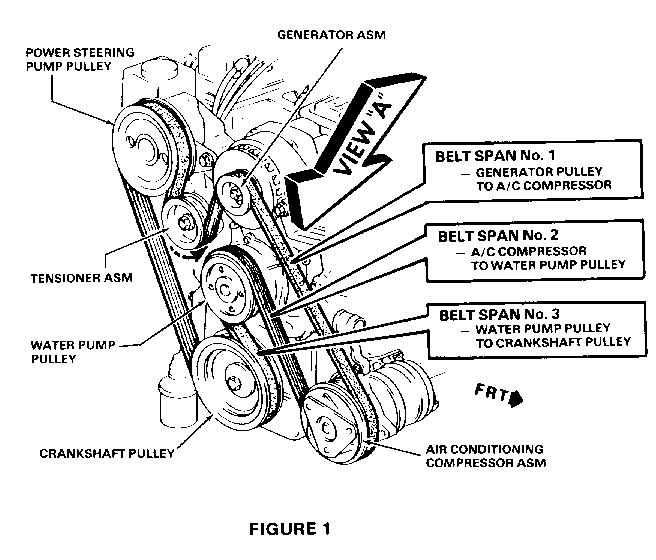
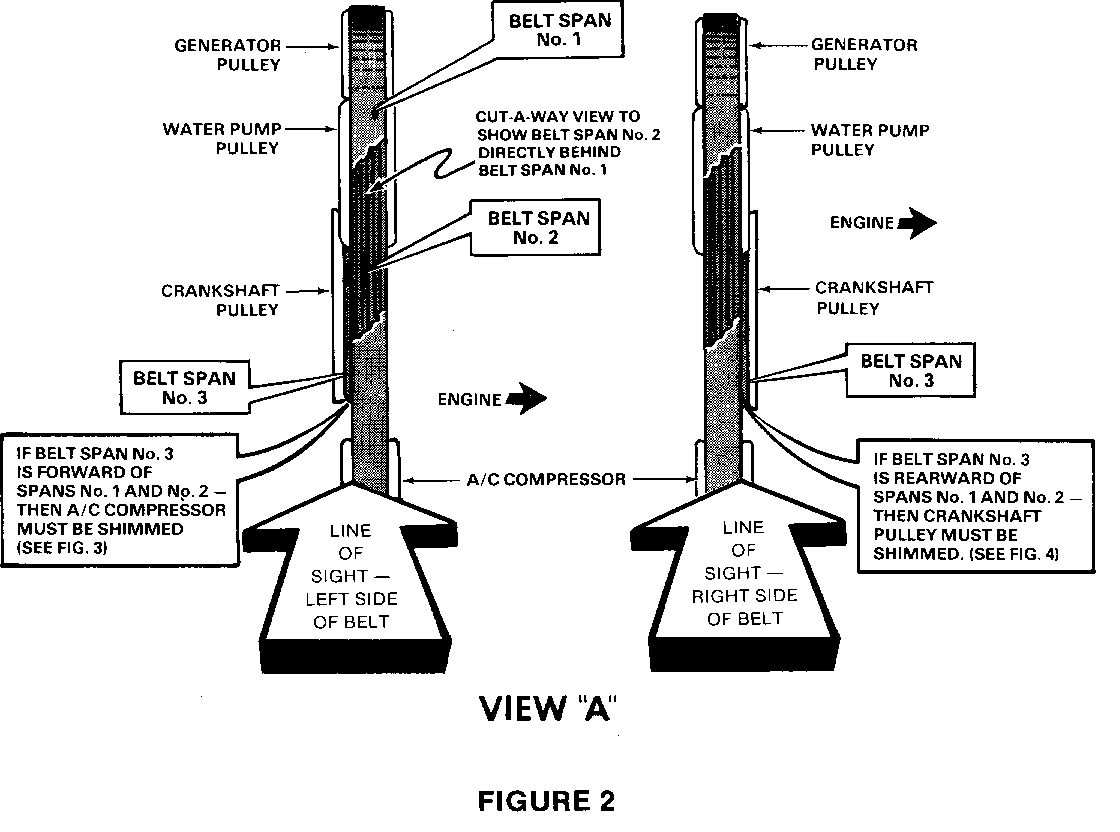
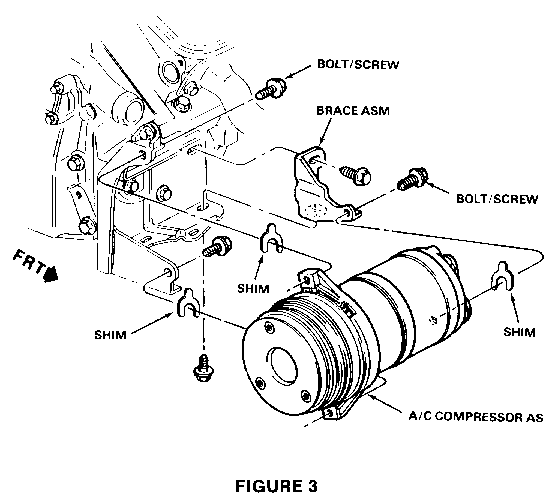
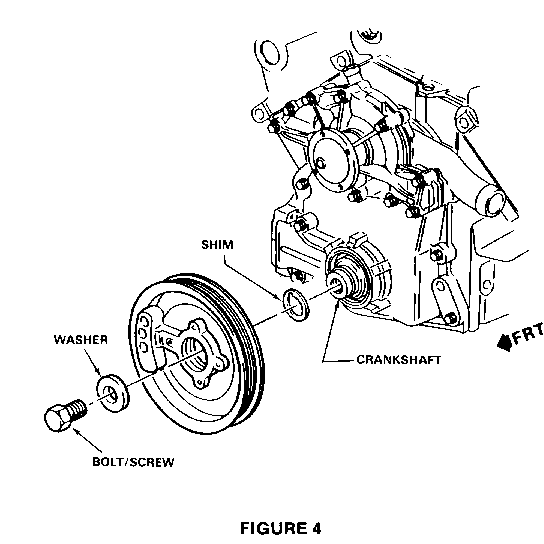
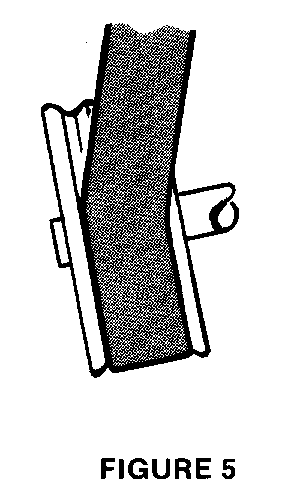
General Motors bulletins are intended for use by professional technicians, not a "do-it-yourselfer". They are written to inform those technicians of conditions that may occur on some vehicles, or to provide information that could assist in the proper service of a vehicle. Properly trained technicians have the equipment, tools, safety instructions and know-how to do a job properly and safely. If a condition is described, do not assume that the bulletin applies to your vehicle, or that your vehicle will have that condition. See a General Motors dealer servicing your brand of General Motors vehicle for information on whether your vehicle may benefit from the information.
